Rising Sun Tavern and The Holocaust Museum
Rising Sun Tavern and The Holocaust Museum
This is Part Three of a series on traveling in the Washington D.C. area and Fredericksburg, Virginia. You can read Part One and Part Two as well.
After we visited Chatham Manor we traveled across the Rappahannock River and went into Fredericksburg to the Rising Sun Tavern. We had plans to visit the Mary Washington house but didn’t make it this trip.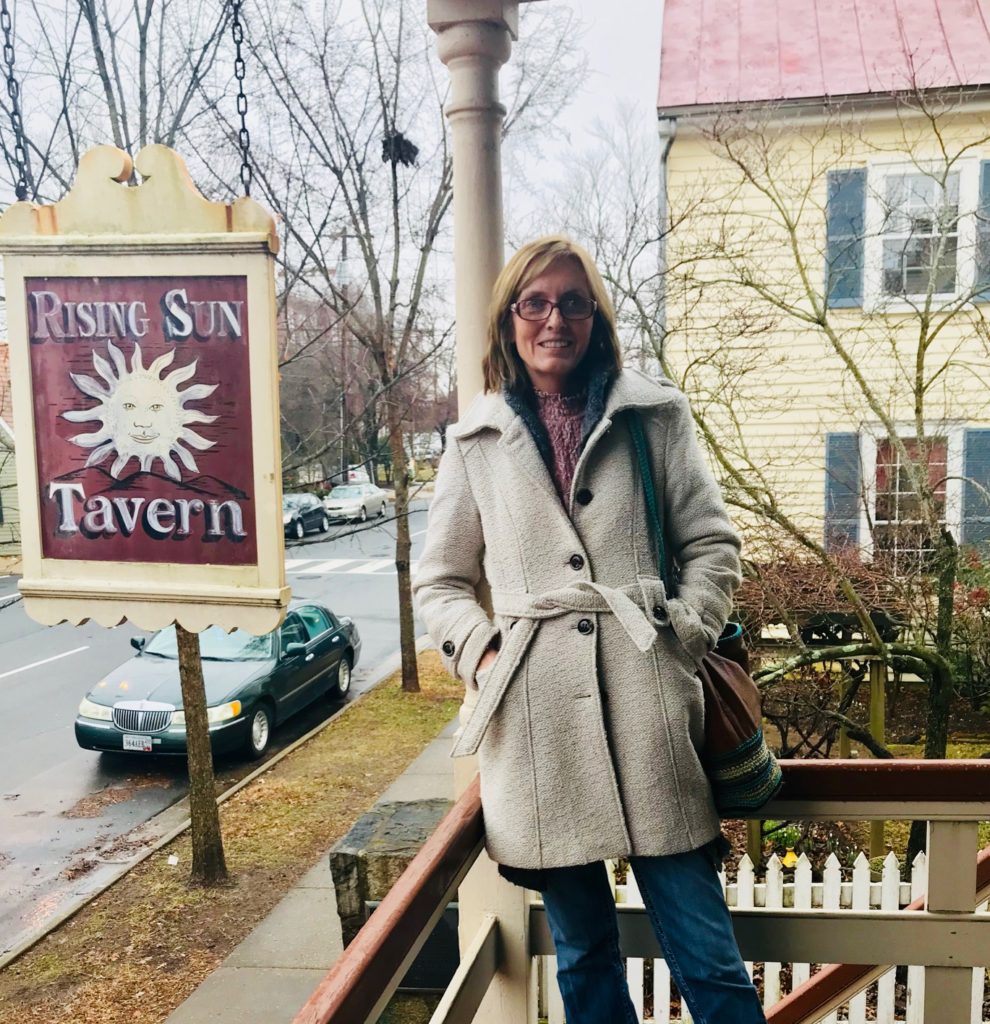
We were asked not to make pictures inside the tavern, so I didn’t but we did make a few outside.
It cost $7 to tour the tavern and a “tavern wench” kept us entertained with fun facts about life back then. One of the things she told us that made a lasting impression on me was that when men stayed the night they didn’t pay to rent a room, they paid to reserve a spot in the bed. Up to five men slept in one bed and they probably didn’t know each other. Yuck!
I also learned where the phrases “double fisted drinking” and “bottoms up” originated. Our tour was entertaining and informative and well worth the money.
The Holocaust Museum
I was a high school history teacher and one of my favorite things to teach was about WWII. There are so many fascinating aspects about that time period that I felt were important for students to know. When I received information in the mail that they were building a Holocaust Museum I made a promise to myself that one day I would go there.
“Since its dedication on April 22, 1993, the Museum has had nearly 40 million visitors, including more than 10 million school children, 99 heads of state, and more than 3,500 foreign officials from over 211 countries. The Museum’s visitors came from all over the world, and less than 10 percent of the Museum’s visitors are Jewish,” from Wikipedia.
When we walked into the museum there were school groups and tourists in the lobby. I noticed one group of children who couldn’t have been more than 8 years old. That surprised me considering the intensity of the visual displays and recordings through out the museum. Personally, I would not recommend taking a child under 12 but each parent has to make that decision for themselves.
The museum has an excellent website and I highly encourage you to visit it and read what you are going to see before you go.
When I was teaching American History I ran across a film that I purchased to show my students. The movie was Kitty: Return to Auschwitz. You can now watch it free on YouTube.
In the film Kitty (a Polish Jew imprisoned in Auschwitz) goes back to the concentration camp with her son to answer his questions about her experiences. There is a particular scene from the movie that stuck in my mind through the years. Kitty tells her son about the importance of the bowls prisoners were issued when they arrived at camp. “It was your life,” she tells him. Without a bowl you could not eat, then she informs him that they also used the bowl as their bathroom. The real bathrooms were often unavailable to prisoners.
As I was walking through the museum I saw this bowl and Kitty’s story came rushing back into my memory. I don’t know if any of my students still remember the movie and the story of the bowl but it is something I will never forget.
All through the museum there are photographs that make your heart ache, but this one had special meaning after I heard one of the museum volunteers tell the story of the woman holding the child.
When prisoners arrived at the concentration camps they were separated into two lines. The line that went to the gas chambers was for older prisoners deemed unfit to work, children and mothers with children in their arms. The prisoners in the other line became forced labor in the camp. They were lied to by prison officials about why they were being separated.
The woman in the photograph some how learned that if a woman was holding a child she was going to the gas chambers. Before they reached the point in the line where officials told you which line you would be in she convinced her daughter to let her hold her grandson. Both daughters were unaware of what was about to happen.
Can you imagine the agony in this mother and grandmother’s heart as she carried her grandchild to their certain death?
Both her daughters did survive the war and one of them is a volunteer at the museum. She did not know about this picture until it was hung there. When she saw it she collapsed in tears. She said she knew her mother did it so that she and her sister would have a chance at life.
We spent two and a half hours inside the museum and when we left I was emotionally spent.
Why You Should Go
The Museum Guide they gave me says on the cover, “This museum is not an answer. It is a question. Then inside the cover it says…..
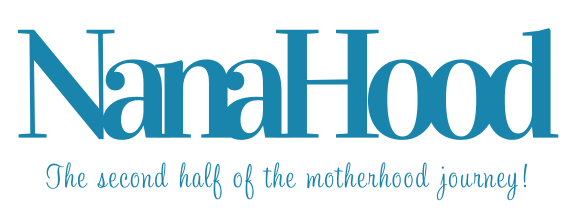
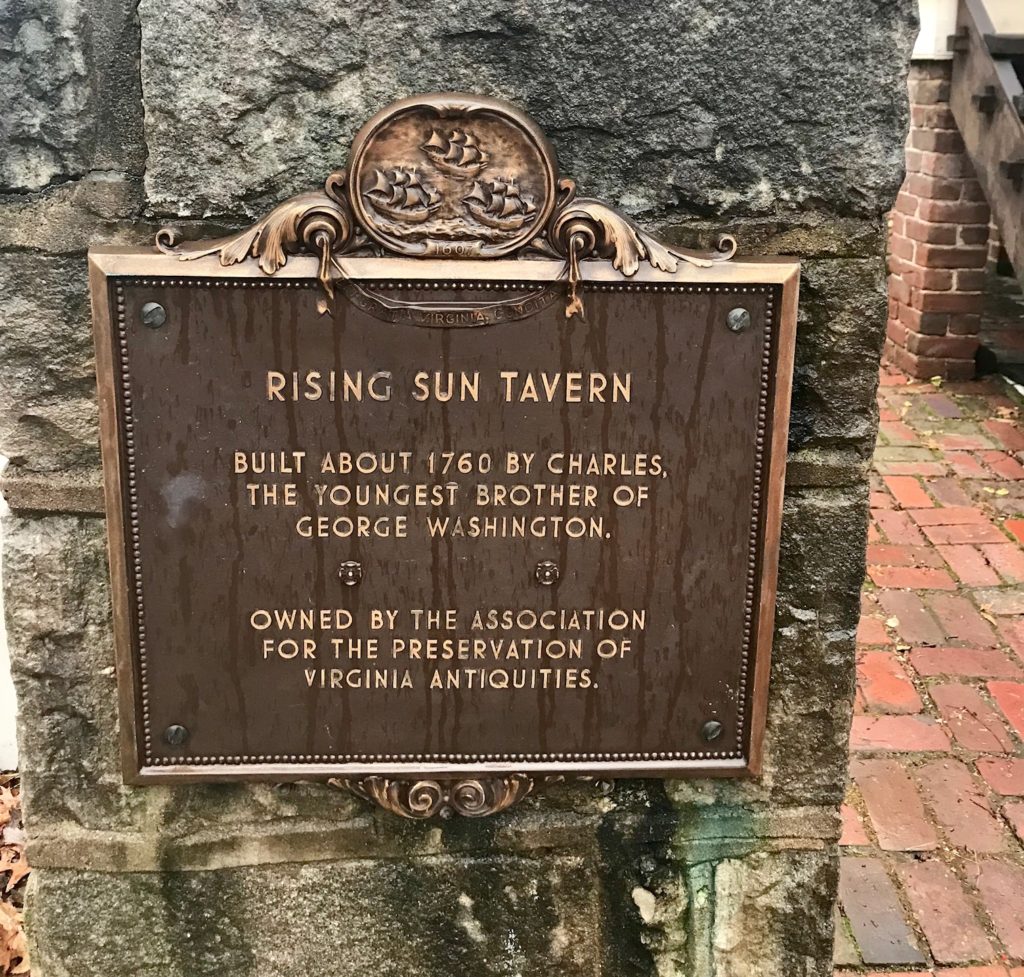
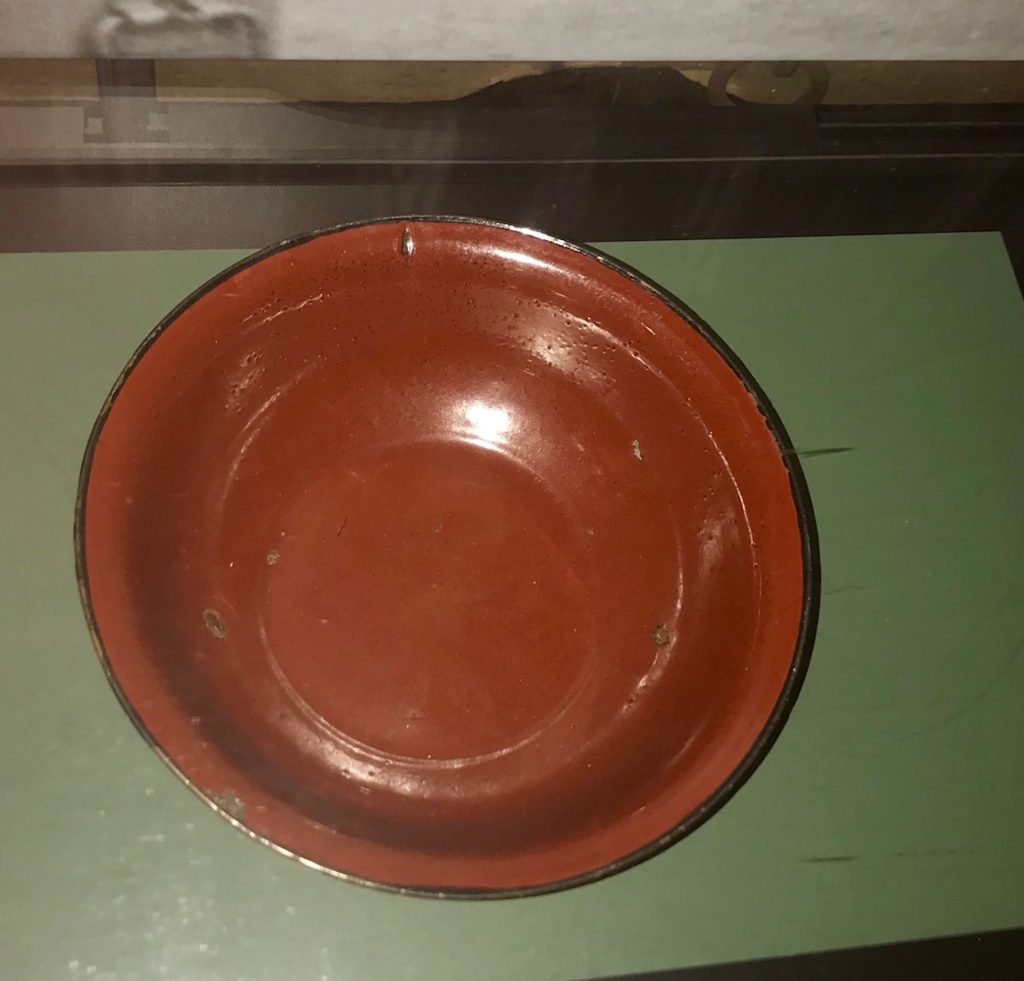
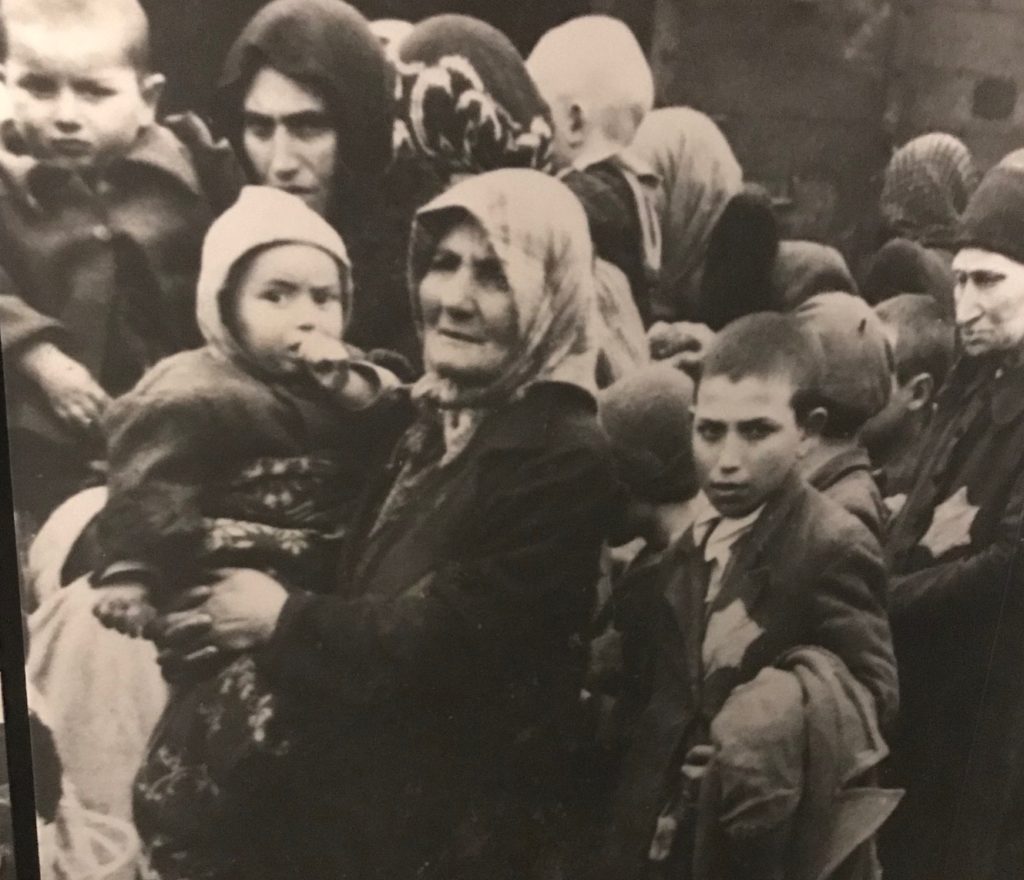
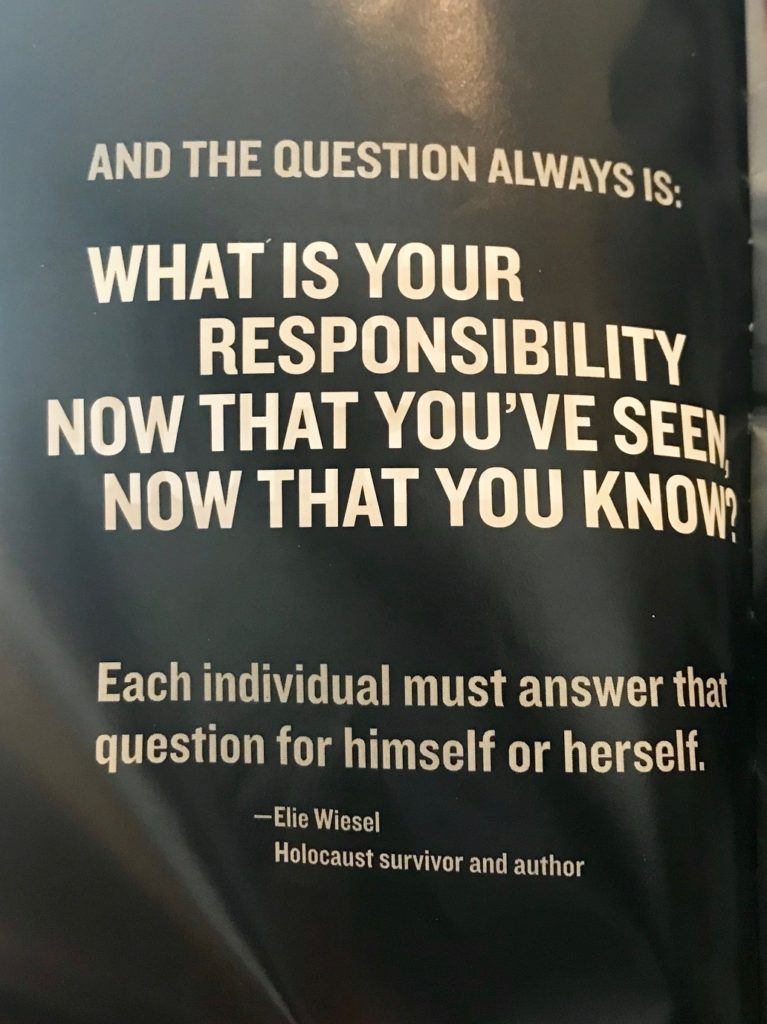
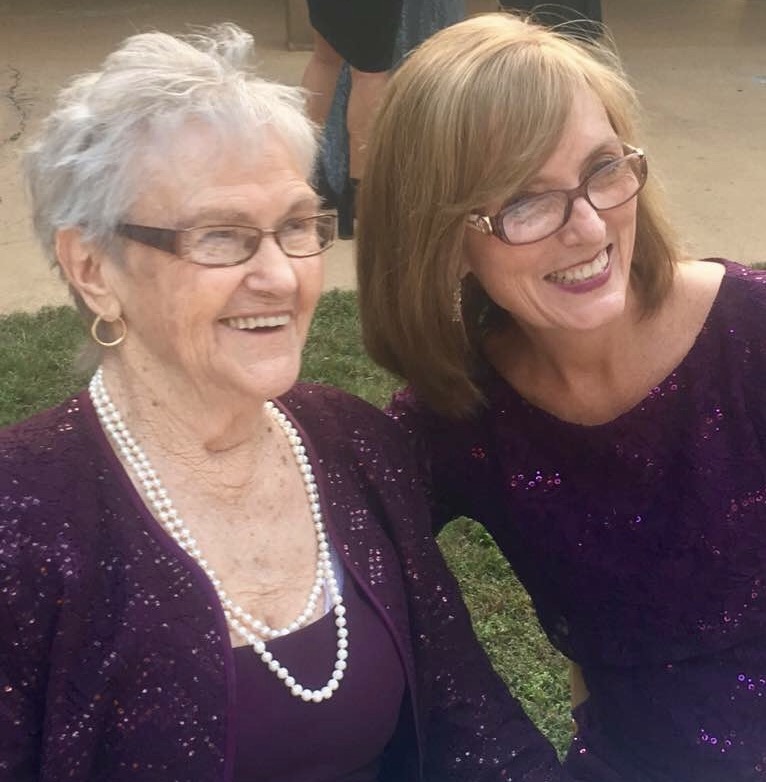

I can not imagine. Just touring the museum was tough!
The company Chris works for has a factory in Poland. And he had to go there last December. While there he toured Auschwitz. The pictures he showed me and the history he shared was unimaginable. He said it was just unbelievable to see all of it in person.